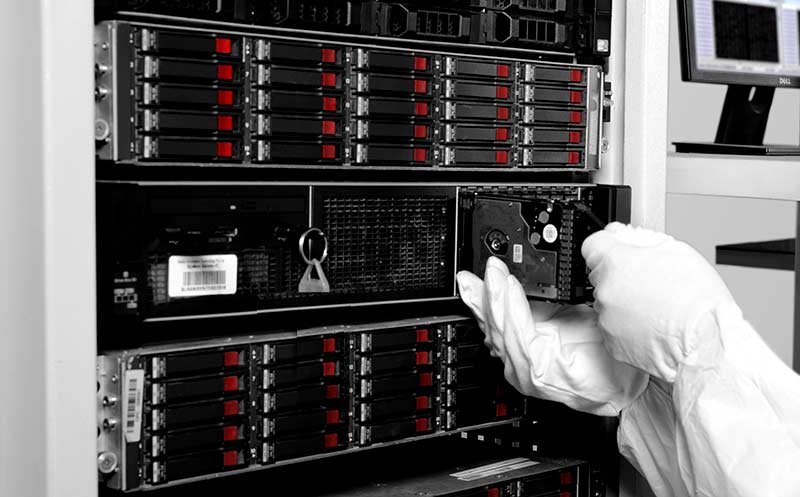“I have WD EX4100, which recently got failed in my RAID 5 setup. Now, RAID 5 is in a degraded state. I want to rebuild my RAID 5 configuration, without any data loss. Please suggest if I should backup my data first or start rebuilding RAID?”
This query is posted by a user on Reddit. Such a situation can occur with other RAID levels as well. If you’re one such user and facing the issue of RAID array failure, then you can rebuild the RAID, depending on your RAID level and the number of disks failed. Though rebuilding the RAID with failed drive(s) may seem a little challenging, you can do it quite effortlessly by following the method shared in this article. But before that, let’s understand the scenarios in which you can rebuild the RAID.

Possible Scenarios for Rebuilding RAID
Here are some possible scenarios where you can rebuild the RAID.
Controller Malfunctioning/Failure: If the RAID controller has failed, the RAID becomes inoperable. You need to check for the physical damage (in case of hardware RAID) and BIOS or OS corruption (in case of software RAID).
Drive Failure or Damage: If a hard drive is logically failed or damaged, you can rebuild the RAID and recover the data (depending on the RAID level).
System Errors: RAID rebuilding is also possible in case your system encounters a blue dump error, a malware attack, CRC error, or not accepting the username and password.
| Important: In case of physical damage to the hard drive in RAID array, replace the damaged hard drive or contact a reliable data recovery service provider. |
Things to Consider Before Rebuilding RAID
For successfully rebuilding the RAID array and recovering RAID data, there are a few points you need to keep in mind. These are:
Understand the RAID Level: You need to first understand your RAID level as data redundancy and fault tolerance are not available in all RAID levels. For example, RAID 0 offers no fault tolerance. This means if a single drive fails, the whole array goes down. On the other hand, RAID levels such as RAID 1, RAID 5, and RAID 6 offer data redundancy. These RAID arrays can survive 1 or 2 drives’ failure depending on the configurations. So, before you start rebuilding, check your RAID array.
Monitor Drive Health: Run a drive monitor utility and check your RAID drives’ health before you start rebuilding. If your drive appears as ‘bad’ or shows a sign of failure, it will not be able to survive the rebuilding process, eventually leading to data loss.
Create Data Backup: Before rebuilding the RAID, you should ensure that a complete data backup should be in place. Hence, either create a disk image of your RAID or clone it. Creating disk image or cloning the drive increases the chance of successful RAID recovery without causing any further damage to the drive.
Don’t Add/Delete Data: Until you’re done rebuilding the RAID, don’t add or delete any data, as any such attempt will overwrite the existing data on the drives. Also, don’t create new RAIDs on the old drives.
Consider Hot-Swap: If extra drives are available in the RAID array, consider hot-swapping the failed drive with the additional one. It allows quick recovery without requiring server shutdown and causing downtime.
How to Rebuild a RAID Array?
For easily and quickly rebuilding the RAID array and recovering the data, you need a dedicated RAID data recovery software. As there are many software available in the market, you can check the top RAID recovery software and choose the one that fits your needs. However, the one software that stands out is Stellar Data Recovery Technician due to its comprehensive data recovery features and ease-of-accessibility. This DIY software reconstructs the corrupted, damaged, failed, or broken RAID virtually and efficiently recovers the data. The software is quite easy to use and requires only a few steps to rebuild RAID. Let’s see how to use this software:
- Download and launch Stellar Data Recovery Technician on your system.
| Note: If you’ve created a disk image of your RAID, load it to recover data from the disk image. If you’ve cloned your RAID, connect the cloned copy to your system. |
- Now, on the Select What to Recover screen, click All Data and then click Next.
- On the next prompt, select RAID Recovery and then click Scan.
- Next, choose the RAID level and select hard drives to Reconstruct RAID.
- Move hard drive up/down to change disk order as they were in original RAID array.
- Select “Don’t know start sector of the drives…” and choose ‘Don’t know…’ in Stripe/Block Size, Parity Order/Rotation and Parity Repetition/Delay dropdown menus.
- Finally, click Build RAID to proceed for RAID rebuilding.
Read this: Complete steps to recover important data from a RAID set using Stellar Data Recovery Technician.
Conclusion
When a hard drive fails in the RAID array, its status changes to ‘Degraded.’ In this state, the workload is put on the remaining drives in the array. If it continues for a long time, then this may put other drives at the risk of failure due to overburden. Hence, it’s always recommended to act promptly in case of RAID drive failure to prevent complete data loss. As soon as the RAID fails or becomes inaccessible, you can use a RAID recovery software, such as Stellar Data Recovery Technician to rebuild your RAID and restore your data successfully.
Was this article helpful?